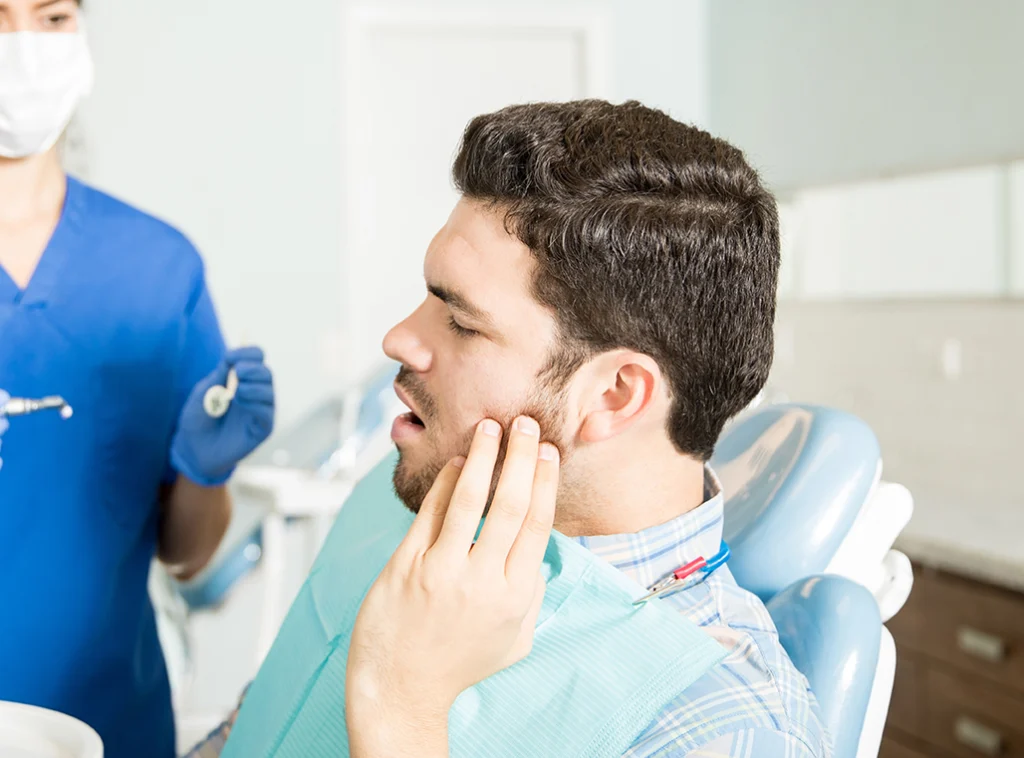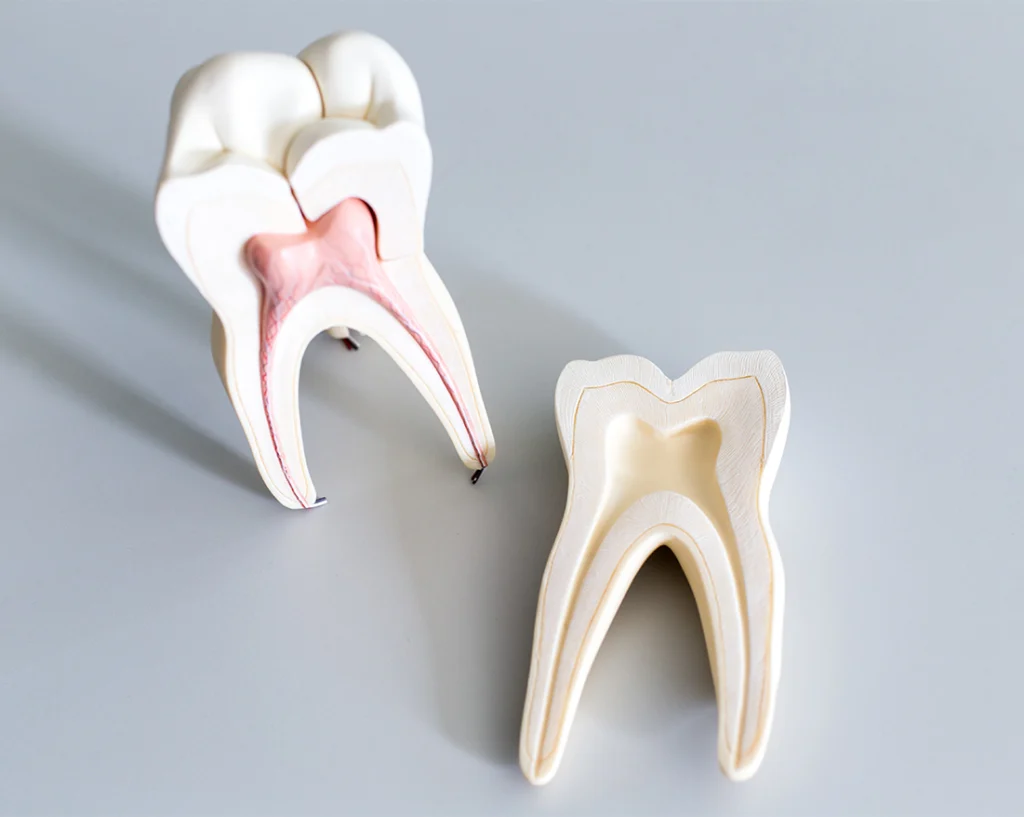Introduction to Orthodontics
Orthodontics is a specialized branch of dentistry that focuses on diagnosing, preventing, and correcting dental and facial irregularities. Unlike general dentistry, which addresses overall oral health, orthodontics specifically targets the alignment of teeth and jaws to improve both function and aesthetics. This field employs various corrective appliances, such as braces, aligners, and retainers, to achieve optimal dental positioning and bite function.
The primary goals of orthodontic treatment include improving dental alignment, enhancing bite function, boosting facial aesthetics, and promoting overall oral health. By addressing misalignments and bite issues, orthodontics not only creates a more attractive smile but also contributes to better oral hygiene and long-term dental health.
Why Orthodontic Treatment is Important
Orthodontic treatment is essential for both functional and aesthetic reasons. Misaligned teeth, overbites, underbites, and other malocclusions can lead to a variety of problems that extend beyond the appearance of a smile.
Functional Benefits
Properly aligned teeth and jaws facilitate efficient chewing and speaking, reducing the strain on the jaw muscles and joints. Misalignments can cause difficulties in chewing, speech issues, and jaw pain, including temporomandibular joint (TMJ) disorders. Additionally, crowded or misaligned teeth are harder to clean, increasing the risk of tooth decay and gum disease.
Aesthetic Benefits
A straight and well-aligned smile can significantly enhance a person’s appearance, boosting self-esteem and confidence. Aesthetic improvements can positively impact social interactions and professional opportunities, contributing to an individual’s overall well-being.
Long-term Oral Health
Research has shown that orthodontic treatment can improve long-term oral health by reducing the risk of cavities, gum disease, and excessive wear on the teeth. Correcting bite issues can also prevent abnormal wear patterns and reduce the likelihood of tooth fractures.
Types of Orthodontic Issues and Their Impact
Orthodontic problems can vary widely in their nature and severity. Understanding these issues is crucial for effective diagnosis and treatment planning.
Crowding
Crowding occurs when there is insufficient space in the mouth for all the teeth to fit properly. This can lead to overlapping, rotated, or protruding teeth, making oral hygiene more challenging and increasing the risk of tooth decay and gum disease.
Spacing
Spacing refers to gaps or spaces between the teeth, which can result from missing teeth, naturally occurring gaps, or abnormal tooth size. Spacing issues can affect speech and chewing efficiency and may lead to shifting of adjacent teeth.
Overbite/Underbite
An overbite is when the upper front teeth excessively overlap the lower front teeth, while an underbite occurs when the lower front teeth protrude beyond the upper front teeth. Both conditions can cause chewing difficulties, speech impediments, and jaw pain.
Crossbite
A crossbite occurs when one or more upper teeth bite on the inside of the lower teeth, leading to asymmetry in the jaw and potential jaw joint issues. This misalignment can cause uneven wear on the teeth and contribute to gum disease.
Open Bite
An open bite is when the upper and lower front teeth do not meet when the jaws are closed. This can result from habits such as thumb-sucking or tongue thrusting and can interfere with proper chewing and speech.
Causes of Orthodontic Issues
Orthodontic problems can develop due to various factors, including genetics, early loss of baby teeth, prolonged thumb-sucking, injuries, and abnormal jaw growth. Addressing these issues early is crucial to prevent complications such as excessive tooth wear, speech impediments, and jaw discomfort.
Impact of Untreated Orthodontic Issues
Leaving orthodontic problems untreated can lead to more severe dental and facial issues in the future. Complications may include increased risk of tooth decay and gum disease, temporomandibular joint disorders, and significant aesthetic concerns that can affect an individual’s self-esteem and quality of life.
The Role of Early Orthodontic Evaluation
Early orthodontic evaluation is a critical step in identifying and addressing potential dental and facial irregularities before they become more complex.
Importance of Early Assessment
The American Association of Orthodontists recommends that children have their first orthodontic evaluation by the age of seven. At this stage, an orthodontist can assess the growth and development of the jaws and incoming permanent teeth, identifying any potential issues early on.
Interceptive Orthodontics (Phase I Treatment)
Interceptive orthodontics, also known as Phase I treatment, involves early intervention techniques to guide jaw growth, correct bite issues, and create space for permanent teeth. These interventions can make future orthodontic treatments more efficient and less invasive.
Signs to Look For
Parents should be vigilant for signs that may indicate the need for orthodontic evaluation, such as difficulty chewing or biting, speech difficulties, visibly misaligned teeth, mouth breathing, or habits like thumb-sucking that can affect dental alignment.
Orthodontic Treatment Options
Orthodontic treatments have evolved significantly, offering a variety of options tailored to different age groups, aesthetic preferences, and specific dental issues.
Traditional Metal Braces
Traditional metal braces are the most common type of orthodontic treatment. They consist of metal brackets bonded to the teeth and connected by wires. Adjustments to the wires gradually move the teeth into the desired position. Metal braces are highly effective for treating a wide range of orthodontic issues.
Ceramic Braces
Ceramic braces function similarly to metal braces but use clear or tooth-colored brackets, making them less noticeable. They are an aesthetic alternative for patients who prefer a more discreet option without compromising effectiveness.
Lingual Braces
Lingual braces are placed on the back (lingual side) of the teeth, making them invisible from the front. They offer a discreet orthodontic solution but may require more adjustment time for both the patient and orthodontist.
Clear Aligners (e.g., Invisalign)
Clear aligners are a popular alternative to traditional braces, consisting of a series of custom-fit, removable trays that gradually move the teeth. They are aesthetically pleasing, nearly invisible, and allow for easier maintenance of oral hygiene since they can be removed during eating and cleaning.
Functional Appliances
Functional appliances, such as palatal expanders and headgear, are used to address skeletal growth issues in children and teens. These devices help guide the growth of the jaws, correct bite problems, and create space for crowded teeth.
Advanced Orthodontic Technologies
Recent advancements in orthodontics include self-ligating braces, which use a specialized bracket that reduces friction and allows for quicker adjustments, and 3D imaging technology, which enhances treatment planning and precision in tooth movement.
The Science Behind Tooth Movement
Orthodontic treatments work by applying controlled forces to the teeth, which induces biological processes that result in tooth movement and alignment.
Periodontal Ligament and Bone Remodeling
The periodontal ligament, a fibrous connective tissue surrounding each tooth, plays a crucial role in orthodontic tooth movement. When force is applied to a tooth, the ligament compresses on one side, causing bone resorption, and stretches on the other side, leading to bone formation. This dynamic process allows the tooth to move through the bone over time.
Cellular Processes
Orthodontic forces stimulate cellular activities within the periodontal ligament and surrounding bone. Osteoclasts break down bone tissue on the pressure side, while osteoblasts build new bone on the tension side, facilitating the movement of teeth.
Biological Limits
It is essential to move teeth at a controlled pace to avoid damaging the roots, gums, or surrounding bone. Excessive force can lead to root resorption, gum recession, and other complications. Orthodontists carefully monitor and adjust treatment to ensure safe and effective tooth movement.
Treatment Phases and What to Expect
Orthodontic treatment typically involves multiple phases, each with specific goals and procedures to achieve optimal results.
Phase I: Interceptive Treatment
Phase I treatment focuses on guiding the development of the jaws and correcting bite issues in younger children. This phase may involve using appliances to expand the palate, correct crossbites, or create space for permanent teeth. Early intervention can simplify or reduce the need for more extensive treatments later on.
Phase II: Comprehensive Treatment
Phase II treatment occurs in older children, teens, and adults, focusing on aligning the teeth and correcting bite problems. This phase involves the use of braces, aligners, or other appliances to move teeth into their desired positions and achieve proper bite function.
Steps Involved in Orthodontic Treatment
- Initial Consultation and Diagnostics: The orthodontist conducts a comprehensive examination, including X-rays, dental impressions, and digital scans to assess the alignment and structure of the teeth and jaws.
- Treatment Planning: Based on the diagnostic findings, the orthodontist develops a personalized treatment plan outlining the necessary appliances and estimated timeline for achieving the desired results.
- Implementation: The chosen orthodontic appliances are fitted, and regular adjustments are made to apply the appropriate forces for tooth movement.
- Follow-up Visits: Periodic appointments are necessary to monitor progress, make adjustments, and ensure the treatment is on track.
Timeline of Treatment
The duration of orthodontic treatment varies depending on the complexity of the case. On average, treatment can range from 12 to 36 months. Factors influencing the timeline include the severity of the misalignment, the type of appliances used, and the patient’s age and compliance with treatment protocols.
Maintaining Oral Health During Orthodontic Treatment
Maintaining optimal oral hygiene is crucial during orthodontic treatment to prevent dental issues and ensure the effectiveness of the treatment.
Oral Hygiene Practices
Patients with braces or aligners should adopt diligent oral hygiene practices, including:
- Brushing: Brush teeth at least twice a day using a soft-bristled toothbrush and fluoride toothpaste. Special orthodontic brushes or interdental brushes can help clean around brackets and wires.
- Flossing: Floss daily using floss threaders or orthodontic floss to remove plaque and food particles between teeth and under braces.
- Using Mouthwash: An antimicrobial mouthwash can help reduce bacteria and maintain oral hygiene.
Routine Professional Cleanings
Regular dental check-ups and professional cleanings are essential during orthodontic treatment. These visits allow for the removal of plaque and tartar buildup, application of fluoride treatments, and early detection of any potential issues such as cavities or gum inflammation.
Dietary Recommendations
Maintaining a balanced diet is important for oral health and the integrity of orthodontic appliances. Patients should avoid foods that are sticky, hard, or sugary, as these can damage braces or contribute to tooth decay. Opting for softer foods and cutting fruits and vegetables into smaller pieces can help reduce the risk of damage to orthodontic appliances.
The Role of Retainers Post-Treatment
Retainers play a critical role in maintaining the results achieved through orthodontic treatment. After braces or aligners are removed, retainers help prevent the teeth from shifting back to their original positions.
Types of Retainers
| Type of Retainer | Description | Pros | Cons |
|---|---|---|---|
| Fixed (Bonded) Retainers | Metal wires bonded to the back of the teeth, typically used for lower front teeth. | Invisible from the front, constant retention. | Requires diligent oral hygiene, potential for wire breakage. |
| Removable Retainers | Custom-made appliances that can be taken out for eating and cleaning. | Easy to clean, no risk of breaking wires. | Requires patient compliance, visible when worn. |
| Clear Retainers | Transparent retainers made from clear plastic materials. | Nearly invisible, removable. | May need frequent replacement, requires compliance. |
Importance of Retainer Use
To ensure the stability of the orthodontic results, retainers must be worn as prescribed by the orthodontist. Initially, retainers are worn full-time, gradually transitioning to nighttime use. Long-term or even lifelong use of retainers may be recommended to maintain the alignment and prevent relapse.
Care and Maintenance of Retainers
Proper care of retainers is essential to their longevity and effectiveness:
- Clean retainers daily using a soft toothbrush and non-abrasive toothpaste or retainers cleaner.
- Store retainers in a protective case when not in use to prevent damage or loss.
- Avoid exposing retainers to heat, which can cause them to warp.
- Regularly visit the orthodontist to check the fit and condition of the retainers.
Orthodontic Treatment for Adults
Orthodontic treatment is not limited to children and adolescents; many adults seek orthodontic care to improve their dental alignment and bite function. Adult orthodontics has become increasingly popular, driven by advancements in technology and a growing emphasis on aesthetics and overall oral health.
Benefits of Adult Orthodontic Treatment
Adults can achieve significant improvements in dental health and aesthetics through orthodontic treatment. Benefits include enhanced bite function, reduced risk of dental issues, and improved self-esteem. Orthodontic care can also address age-related dental concerns, such as tooth wear and jaw alignment issues.
Orthodontic Options for Adults
Adults have access to a variety of orthodontic treatments tailored to their needs and lifestyle preferences:
- Clear Aligners (e.g., Invisalign): Popular among adults for their discreet appearance and removability.
- Lingual Braces: Invisible from the front, making them ideal for professionals and individuals concerned about aesthetics.
- Ceramic Braces: Less noticeable than metal braces, offering a more aesthetic option without compromising effectiveness.
- Self-Ligating Braces: Require fewer adjustments and may offer more comfort during treatment.
Challenges in Adult Orthodontics
Orthodontic treatment in adults may involve different challenges compared to younger patients. These can include slower tooth movement, periodontal concerns, and the potential need for surgical interventions in severe cases. However, with modern techniques and personalized treatment plans, these challenges can be effectively managed to achieve successful outcomes.
Managing Discomfort and Potential Side Effects
Orthodontic treatment may cause some discomfort and side effects, especially during the initial stages and after adjustments. Understanding these potential issues and knowing how to manage them can enhance the overall treatment experience.
Common Side Effects
- Discomfort After Adjustments: It is normal to experience soreness or pressure after adjustments to braces or aligners as the teeth begin to move.
- Jaw Soreness: Movement of the teeth can sometimes cause temporary jaw pain or stiffness.
- Irritation from Brackets and Wires: Braces can cause irritation to the cheeks and gums, especially when they are first applied or adjusted.
Strategies for Managing Discomfort
- Over-the-Counter Pain Relief: Non-prescription pain relievers like ibuprofen can help alleviate soreness.
- Orthodontic Wax: Applying wax to brackets and wires can reduce irritation and protect the soft tissues of the mouth.
- Saltwater Rinses: Rinsing with warm saltwater can soothe irritated gums and reduce inflammation.
- Soft Foods: Consuming soft foods can minimize discomfort and reduce pressure on the braces.
Potential Risks and How Orthodontists Mitigate Them
While orthodontic treatment is generally safe, there are potential risks such as root resorption, gum issues, and decalcification. Orthodontists minimize these risks by:
- Carefully planning and monitoring tooth movement to avoid excessive forces.
- Ensuring proper oral hygiene to prevent gum disease and decalcification.
- Conducting regular check-ups to monitor progress and address any issues promptly.
The Long-term Benefits of Orthodontic Treatment
Orthodontic treatment offers numerous long-term benefits that extend beyond improving the appearance of the smile.
Improved Dental Health
Straight teeth are easier to clean and maintain, reducing the risk of cavities, gum disease, and other dental issues. Proper alignment also ensures that biting and chewing are efficient, preventing excessive wear on certain teeth.
Enhanced Bite Function
Correcting bite issues such as overbites, underbites, and crossbites improves jaw function, reducing the risk of TMJ disorders and associated pain. A functional bite also facilitates better digestion by ensuring efficient chewing.
Psychological and Social Benefits
A confident smile can significantly enhance an individual’s self-esteem and social interactions. Improved aesthetics can lead to increased confidence in personal and professional settings, positively impacting overall quality of life.
Long-term Oral Health Outcomes
Studies have shown that individuals who undergo orthodontic treatment have better long-term oral health outcomes, including fewer cavities, reduced periodontal disease, and lower instances of tooth loss. Straighter teeth also contribute to a more balanced and harmonious facial structure.
Conclusion
Orthodontic care is a crucial investment in long-term oral health and quality of life. By addressing dental and facial irregularities, orthodontic treatment not only enhances the aesthetics of a smile but also improves bite function and overall oral health. Early evaluations and interventions can simplify treatment and lead to more efficient outcomes, while a variety of treatment options cater to different needs and preferences. Managing discomfort and maintaining oral hygiene during treatment ensures successful results, while the use of retainers post-treatment preserves the achieved alignment. Orthodontic care extends beyond aesthetics, offering significant functional and psychological benefits that contribute to an individual’s overall well-being. Patients are encouraged to seek timely orthodontic evaluations, adhere to recommended treatment plans, and maintain diligent post-treatment care to ensure lasting and optimal results.








